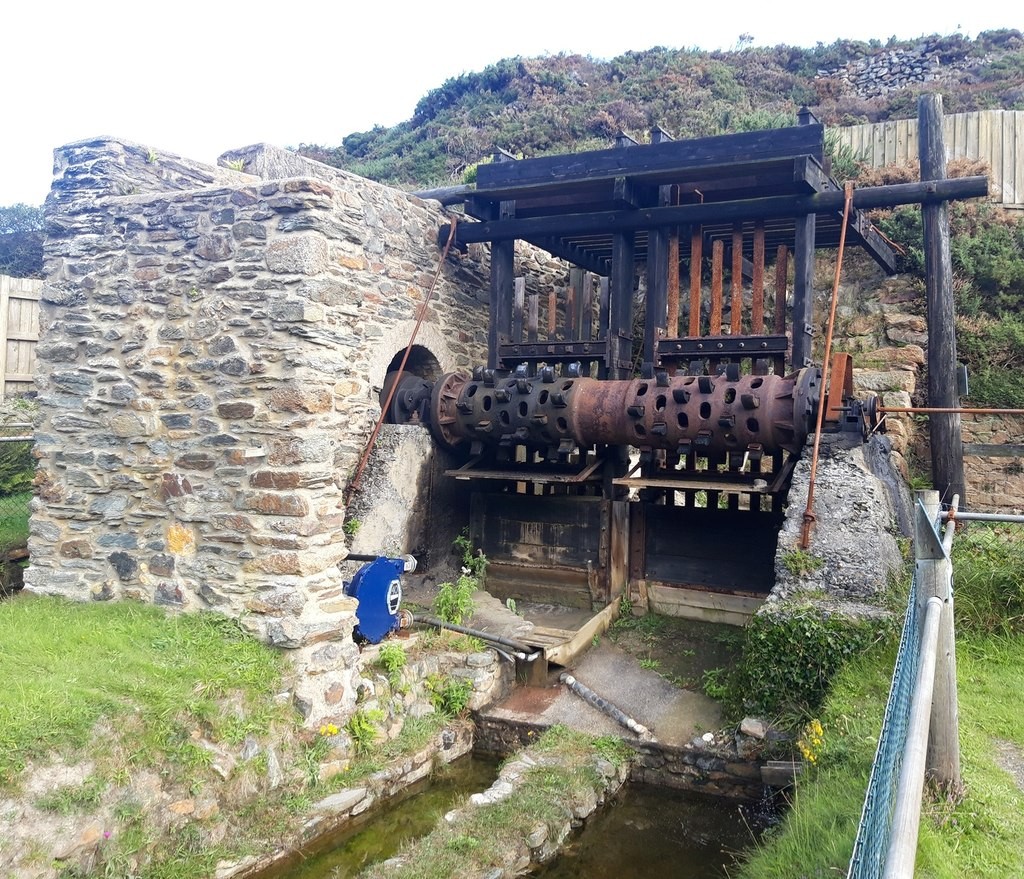1897 sett part of Penhalls. An amalgamation was formed in 1810, incorporating several small 18th-century mines such as Wheal Betsy, Wheal Dellick, Wheal Dragon, Wheal Glyn, Wheal Joy, Goonlaze Mine, and Wheal Pink. Wheals Dellick, Dragon, and Glyn operated on the west side of the stream, with Wheal Dellick positioned opposite. Most of these workings are no longer identifiable, and their names persist only in the lodes named after them. The mine ceased operations in 1819 and remained inactive for many years, except for sporadic small-scale work, likely above adit, in the 1840s. Goonlaze Mine eventually merged with Wheal Kitty during this period. In 1858, Blue Hills Mine resumed operations and operated continuously until its closure in 1897, during which time it produced 2,117 tons of black tin. The extensive dumps in the lower valley and the engine house with its free-standing stack at Blue Hills Engine Shaft date back to the final working period, with the engine house constructed in the 1860s to accommodate a 70-inch pumping engine. More recently, a small-scale tin concentrating and smelting operation, as well as tin-streaming activities in Trevallas Coombe, have been established for tourists on the site of the old mine. Tours demonstrating the process are offered, and tin ingots and jewelry are available for purchase
1780s 1800s - 1858-1897
External Links
Publications (4)
- (1997); WMS Newsletter Issue 37 Dec; 11 pages
- Dines, Henry George (1956); BGS - Regional Memoirs - Metalliferous Mining Region of South West England Vol1, The; 567 pages
- Fellows, Roy; Cornwall Underground; 25 pages
- NMRS; Newsletter Feb/1990; pp.7









